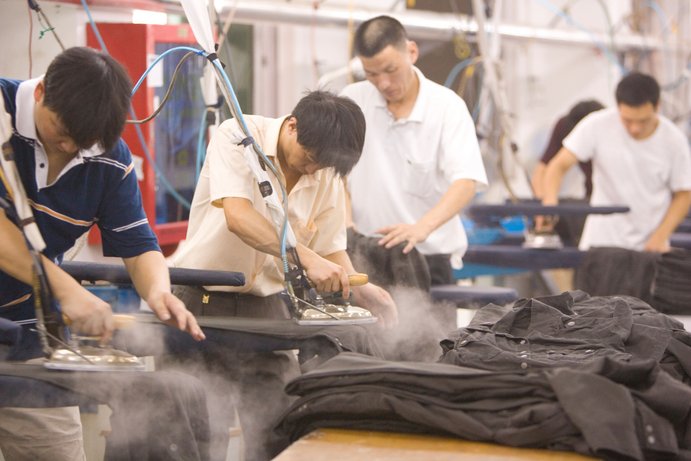Case Study
Improve Quality Through SOP Compliance for a Global Garment Manufacturer
Utilizing PowerArena AI for workers’ motion study to monitor productivity and secure SOP compliance

1. Background
Headquartered in Hong Kong, the apparel company has been a pioneer in the garment industry for over seven decades, having over ten manufacturing sites in the world with bases from China to Thailand to Malaysia to Ethiopia, the company is responsible for one out of six dress shirt sold in the US nowadays. The group manufactures various clothing items ranging from shirts to suits, exporting mainly to Europe and North America, supplying to global renowned brands such as Michael Kors, Patagonia, L.L. Bean, G2000…etc.
As the world leader in the industry, the company is constantly pioneering innovation and perfecting their manufacturing process, to continue supplying top-quality products to their clients for decades to come.
2. Business Challenge
Serving many notable brands around the globe, the world-class manufacturing site has a strong emphasis on quality. The factory has been investing in the standardization of procedures, however, they found it hard and time-consuming to keep track of every action performed by each workers.
“We cannot be on scene 24/7 to monitor what’s happening and if they are operating in the way they should be. It’s a fast-pace working environment and sometimes only the end-results (finishing products) were valued.” Mentioned site supervisor.
However, in garment, in terms of quality, a tiny step plays a difference. A set of Standard Operating Procedure (SOP) was set for the workers to follow when operating to ensure product quality. Nevertheless, without monitored, the factory couldn’t make sure all operators were in compliance with the issued SOP.With the SOP in place, the manufacturing site would like to push a step further in developing a method to ensure each step is followed.
3. Solution
Cameras connected to PowerArena’s machine was put in place to monitor the procedures of the ironing line. The manufacturing site categorized its standardized procedures and a dozen of steps (out of the over 100 procedures in ironing) were selected to be integrated with PowerArena’s AI Technology for data collection. The chosen steps were determined to be critical for product quality and must be performed accordingly.
Granular data were collected at the plant’s disposal to further evaluate its operations and everything was ran locally on premise so that it followed the strict data security requirements.
With the gathered information, the site was also made known on whether the workers compliance with the plant’s SOP.
Results
The data collected provided superhuman insights to production managers, base on the data, the site was able to reach the following conclusions: Difficulty to Meet General Sewing Data (GSD)* Time
Difficulty to Meet General Sewing Data (GSD)* Time
The plant marked a significant difference between GSD time and the workers’ cycle time. It was later discovered through the data that when the operators follow all required steps, the sites’ GSD standard time were not met, which played a factor in further evaluating the rationale between the reality and standard time when it comes down to costing.
Skipped Steps in Certain Stock Keeping Units (SKU)
Some steps that plays a critical part in quality, such as ironing the cuffs and sleeves were often omitted by the workers.
Addition Training Needed On Some Procedures
The factory is made aware of the steps that have the biggest discrepancy with the GSD and therefore should provide additional training on those.
PowerArena’s solution also provided insights to managers regarding operator’s performance and workers that might require additional training to improve productively both personally and the operation as a whole.
*GSD Sewing Formula
In the sewn-products industry, some 80% of the cost is committed at the design sampling stage. GSD gives facilities a costing tool that allows sites to accurately predict the best known methods of manufacturing prior to production. The system provides for the management of all operation standards and the basis of rapid labor cost estimating.
GSD is also used in labor cost estimation when preparing quotations for clients.
